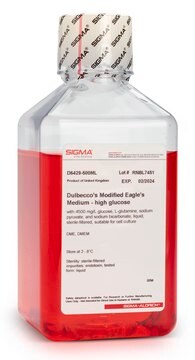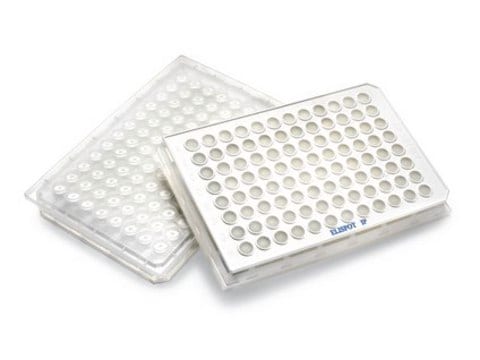SCC652
GLUTag Mouse Colonic Endocrine Cell Line

Synonyme(s) :
GLUTag, GLUTag cells, Murine GLUTag cells
About This Item
Produits recommandés
Source biologique
mouse
Niveau de qualité
Conditionnement
vial of ≥1 x 10^6 vial (viable cells per vial)
Fabricant/nom de marque
Millipore
Technique(s)
cell culture | mammalian: suitable
Conditions d'expédition
liquid nitrogen
Température de stockage
−196°C
Application
- Each vial contains > 1X106 viable cells.
- Cells are tested negative for infectious diseases by a Mouse Essential CLEAR Panel by Charles River Animal Diagnostic Services.
- Cells are verified to be of mouse origin and negative for interspecies contamination from human, rat, Chinese hamster, Golden Syrian hamster, and nonhuman primate (NHP) as assessed by a Contamination Clear panel by Charles River Animal Diagnostic Services
- Cells are negative for mycoplasma contamination.
Caractéristiques et avantages
Description de la cible
The GLUTag cell line is an effective intestinal endocrine L-cell model derived from colonic tumors of transgenic mice. This cell line secretes a variety of pro-glucagon derived peptides (PGDPs) such as GLI, IRG, and GLP-1.1 GLUTag cells are among one of the most widely used cell models to understand GLP-1 secretion. GLUTag cells are capable of activating GLP-1 secretion in vivo and have a phenotype that closely mirrors non-immortalized intestinal L-cells with some slight genetic differences. The immunoreactive profile of GLUTag cells also suggests L-cell lineage by being positively immunoreactive to GLP-1 and cholecystokinin, but negative for a large variety of other hormones such as calcitonin, insulin, and gastrin.
Although the GLUTag cell line has murine origins, they have been shown to have a relevant response mechanism that essentially mirrors the GLP-1 secretion response in humans. This means that testing potential therapeutic agents using GLUTag cells has been shown to still have a strong relevance to a human model. The ease-of-use of GLUTag cells becomes quite invaluable when compared to the difficulties of using primary human L-cells.
Source
Derived from an endocrine carcinoma in a mouse expressing SV40 Large T antigen. Fragments of the tumors were subcutaneously propagated in nude mice and individual cells from one of the tumors was isolated and single-cell cloned.
References
1. Drucker DJ, Jin T, Sylvia L, Young TA, Brubaker PL. 1994. Activation of proglucagon gene transcription by protein kinase-A in a novel mouse enteroendocrine cell line. Molecular Endocrinology. 8(12):1646–1655.
2. Kuhre RE, Wewer Albrechtsen NJ, Deacon CF, Balk-Møller E, Rehfeld JF, Reimann F, Gribble FM, Holst JJ. 2016. Peptide production and secretion in GLUTag, NCI-H716, and STC-1 cells: a comparison to native L-cells. Journal of Molecular Endocrinology. 56(3):201–211.
Stockage et stabilité
Autres remarques
Clause de non-responsabilité
Code de la classe de stockage
12 - Non Combustible Liquids
Classe de danger pour l'eau (WGK)
WGK 2
Point d'éclair (°F)
Not applicable
Point d'éclair (°C)
Not applicable
Certificats d'analyse (COA)
Recherchez un Certificats d'analyse (COA) en saisissant le numéro de lot du produit. Les numéros de lot figurent sur l'étiquette du produit après les mots "Lot" ou "Batch".
Déjà en possession de ce produit ?
Retrouvez la documentation relative aux produits que vous avez récemment achetés dans la Bibliothèque de documents.
Notre équipe de scientifiques dispose d'une expérience dans tous les secteurs de la recherche, notamment en sciences de la vie, science des matériaux, synthèse chimique, chromatographie, analyse et dans de nombreux autres domaines..
Contacter notre Service technique








